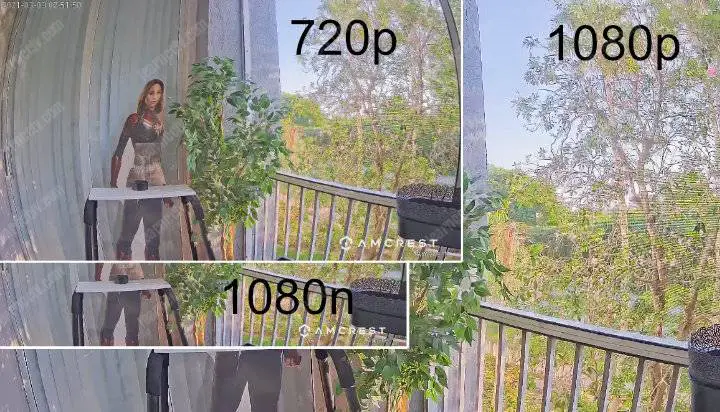It is no secret that security cameras have many components, and resolution is one of many. In this article, you will learn what a 1080n resolution is.

You are probably familiar with 1080p, which is the resolution in which you watch videos on your YouTube and Netflix at home. In this case, p stands for pixels.
This resolution is standard in HD or High Definition TV screens. Let’s go over what High Definition is. When building an image, you have hundreds or even thousands of little dots called pixels, meaning the more dots, the clearer the picture.
This type of resolution nowadays is usually 720p or 1080p. Nevertheless, with a technological advance, even 4K and 8K are available today.
Each resolution is a ratio. For instance, 720p is actually 1280 x 720 pixels. 1280 being the length of the screen and 720 being the height. Down below, you can see a chart for the different ratios of resolution.
Size | Lenght | Height |
|---|---|---|
720p | 1280 | 720 |
1080p | 1920 | 1080 |
4K | 3840 | 2160 |
8K | 7680 | 4320 |
However, there is another resolution. The 1080n is different from the 1080p. This is where it might get confusing for you. The ratio for this resolution is 1080 x 960 pixels.
The p, like seen in 720p and 1080p, signifies that the resolution is progressive. In contrast, n means that the resolution is native. But what does that mean?
Progressive vs Native
Remember how TVs used to be? Like not flat? The very box-like and heavy? Well, it is common sense that those TVs do not operate like the ones you have at home.
Back in the day, TVs used interlacing, in which the pixels were set up differently, then it is used today. Interlacing would cut down on the required amount of bandwidth needed to fill up the screen by only displaying every other line.
Though it was a great idea, it caused ghosting and created a weird flow for the image. This is now irrelevant as the TVs nowadays have the processing speed of filling up the whole screen line by line, which is the method called progressive scan.
Lastly, there is native resolution, which unlike progressive scan and interlacing, it displays the whole picture at once, instead of one at a time. This is where the 1080n format fits in.
When using multiple screens or an uncongested network, it can work out just fine, as the picture will not stretch or squash. However, you should be aware that there is a downside to using native resolution. .
However, when working with a congested network, the picture might come out looking choppy or be severely slow. Down below, you can find a comparison between 1080p and 1080n.

Why are higher resolutions better?
It pretty much works like this, the higher the number, the more pixels, meaning a better image. From there on, it’s just math.
For instance, 720p is 1280x720 pixels, multiplied that equals to 921,600p. Since it is just below a million, you could say that it is 1mp, meaning one megapixel.
Keep in mind that one megapixel is equivalent to one million pixels. If you continue the process, you will find out that 1080p is around 2mp. So on and so forth.
When recording, the higher the resolution, the better you can zoom into the image without distorting it. This can come in handy if you want to take a picture of something far away or even see a person walking by more clearly.
The bottom line
Whether you use 1080n or 1080p, you are working with a high enough amount of pixels to give you a suitable resolution.
However, nowadays, 1080p is one of the most universal ratios for resolution and does not have downsides like 1080n.
But it is ultimately up to you to choose which resolution fits you best. Let us know your preferred choice in the comments.
Don’t forget to share this article!